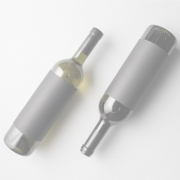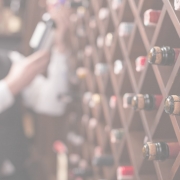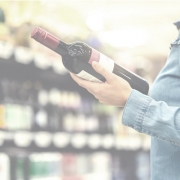A lot of recent media attention has focused on the demographic crisis looming in the wine category. And for good reason: the numbers are scary.
In late 2020, Wine Intelligence, a division of IWSR Group, undertook an analysis of its long-run consumer wine insights data across 11 markets. At the time we were interested in how the pandemic might be changing behaviours, particularly with the shutting of the on-premise. The hypothesis was that wine might be struggling to remain connected with younger consumers of legal drinking age (LDA) because in normal times, this demographic was much more likely to drink wine in bars, pubs and restaurants than when they were at home. With such venues shut, would they drift away from wine?
Wine Intelligence analysts found exactly that pattern – shutting down the on-premise did shut down a key channel for younger LDA+ consumers to encounter wine, a key channel for their previous consumption of wine at social settings. Additionally, there is a longer-term pattern: participation rates in wine (defined as the % of a given age group who say they drink wine at least once a month) among the LDA-34 age group endured a steady slide over the 10-year period from 2010-2020. This was true across a number of markets, in particular the US, UK, Sweden and Japan, whilst noting that there were some exceptions where participation rates rose or remained stable, such as in South Korea and Canada. The biggest changes could be found in the UK and US: in 2010, around half of UK adults in LDA-34 drank wine once a month, and by 2020 this fell to 26%; in the US, the corresponding fall was 36% to 21%. During the same period, participation rates of wine drinkers among the Boomer generation rose in both markets.
Some in the wine industry have drawn comfort from the notion that participation rates in wine might yet bounce back. After all, the pandemic has enforced a lot of changes in behaviour – working from home, avoiding crowds, stay-cations – which may moderate or lapse entirely once the world returns to something approaching normal. However, there is an equally well-argued case that Covid has left an indelible mark on behaviour, meaning that changes over the past two years will take a long time to unwind – if ever.
Many leading industry commentators have been flagging the wine industry’s demographic challenge, and believe that wine isn’t connecting with the mainstream of younger LDA+ adult consumers as well as it could, and the pandemic has both accelerated and exposed this. As one leading US specialist wine retailer shared with Wine Intelligence recently “wine is losing share of beverage alcohol to other categories, which are doing a better job of classic aspirational brand marketing.”
“In the US, still wine continues to lose volume share to the spirits and hard seltzer categories. Recent wine launches, such as Fitvine (Fitvine), Kendall Jackson Avant (Jackson Family Wines), BABE 100 (AB InBev), Bota Box Breeze (Delicato), Cupcake Light Hearted (The Wine Group), and Kim Crawford Illuminate (Constellation), have increasingly focused on health and wellness attributes, as well as more convenient and portable packaging, in order to help generate interest in the wine category,” comments Brandy Rand, COO Americas IWSR Drinks Market Analysis.
Wine Intelligence insights do however point to a silver lining: those younger LDA+ adults who are connecting with wine tend to be more engaged, enthusiastic, and above all high-spending, especially compared with older Boomers. This suggests a future of wine ceding ground to other categories as a mainstream, accessibly-priced beverage, whilst retaining and building its premium consumer base – those who are drinking less, but want to have a special product when they do buy wine. If not openly acknowledged, this view is reflected in long-term strategies among larger wine producers to rely less on low-value, high volume product, and migrate up the value chain to lower volume, higher priced and high margin wines.
However, perhaps now is a good time to challenge some of the well cited assumptions. First, that if the wine category fails to grab someone in their 20s and 30s, they are lost to wine forever, and second, that today’s older consumers (those currently in their fifties and beyond) are a declining market of consumers who only buy what they know whilst tending to spend less.
The main challenge to these assumptions comes from the growing body of evidence offered by economists, demographers and sociologists about how the patterns of human existence have changed over the past 50 years. Extending life expectancy, falling birthrates and the consequent ageing of the population (if more people live longer, average ages go up), plus technological and economic changes, are creating a new model of how to structure one’s life. The traditional three-stage existence – education, employment, retirement – is now largely redundant. Instead, people will undergo more frequent iterations of each: retraining or further education at different stages of life, followed by periods of employment and leisure.
This is the core thesis of the most important recent work on the subject, The 100 Year Life, by Linda Grattan and Andrew Scott of London Business School, published in 2016. The authors acknowledge the fundamental problem with extended lifespans, which is how we individually finance a long period of life in ‘retirement’ and how the state funds the health and welfare infrastructure to support a growing population balanced against a declining base of working-age taxpayers.
However, instead of throwing up their hands at an impending disaster, Grattan and Scott paint a more optimistic picture. Their vision of the 100-year life involves a more multivariate approach to the notion of ‘career’, which may involve several changes of direction, periods of parenting, education, that respond more flexibly to the individual’s needs at the time, and indeed of society’s needs in terms of work that needs doing. The fundamentals of success in this life therefore come not from one’s initial education choices, nor from the first ‘career’ job, but how an individual navigates all the subsequent choices and challenges within a post-education working life that might last 60 years or more. Instead of doing the same job and retiring at 60, those in the workforce today may find a second, third, or even fourth career that enables them to use their skills and intellect long after their parents would have retired.
This idea of intellectual re-tooling and reinvention within an extended lifespan lies at the heart of the challenge to the wine industry’s worries about losing its grip on younger LDA consumers. The decline scenario’s central assumption, that behaviours established early in adulthood are somehow ‘locked in’ forever, is a chilling prospect. However, it begins to look very doubtful when set against the notion that people in their 20s and 30s today will carry on learning, experimenting and discovering for many decades to come. Equally, it begs the question why the wine industry should assume that people in their 50s, 60s and beyond are somehow a lost cause when it comes to expanding their repertoires, trading up, and forging a more intellectually interesting relationship with the wine category.
Of course, when predicting future consumer behaviour patterns over the next decade or more, hard evidence is often hard to come by. So how do we know which scenario is more likely for the wine category – doomsday or renaissance? The most useful evidence we have to examine products and categories that are relatively new, as based on the ‘doomsday’ hypothesis, these would be only of interest to younger people, and not of interest to older consumers.
To review if the doomsday scenario might take hold, we can review the IWSR Covid Tracker data, collected over 12 months between mid-2020 and mid- 2021 during the first year of the pandemic which surveyed a nationally representative sample of alcohol drinkers of legal drinking age. Our questions: how did the user profile of Tik Tok, a fast-growing social media app, change in the UK, and how did the user profile of Hard Seltzer – a relatively new beverage category – change over the same time period in the US?
In both cases, one would expect the user base of such new things to be heavily skewed towards younger LDA+ alcohol consumers, but in fact this is only the case for Tik Tok. Notably, in both cases the user profiles are changing over time – by recruiting older drinkers. Tik Tok users in the UK in August 2020 were completely dominated by the LDA-35s, who accounted for 74% of the user base. However, by July 2021 this had fallen to 65%, while the user base as a whole expanded. The biggest growth for Tik Tok in this period was actually among alcohol drinkers aged 35-64. In the US, LDA-34 year olds accounted for 38% of the Hard Seltzer user base in the summer of 2020, and by the summer of 2021 this had fallen to 35%. The biggest growth in participation rates in Hard Seltzer during this period actually came from the over 65s.
Neither data point on its own offers conclusive proof, and more data, over a longer time period, would be required to draw any meaningful inferences about human behaviour patterns in the 21st century. However, both offer optimism to a wine industry that needs to re-boot its relationships with consumers of all ages as the world emerges into a post-pandemic way of living.
You may also be interested in reading:







Leave a Reply
Want to join the discussion?Feel free to contribute!